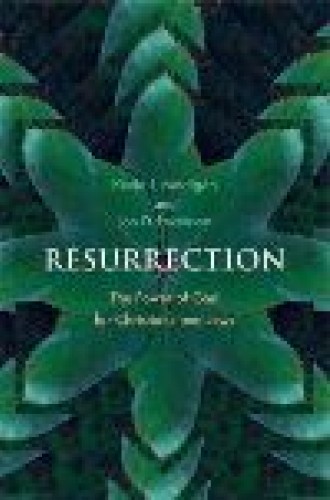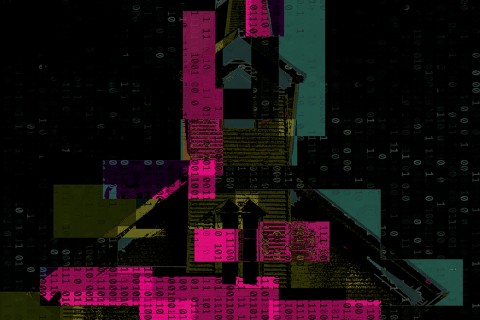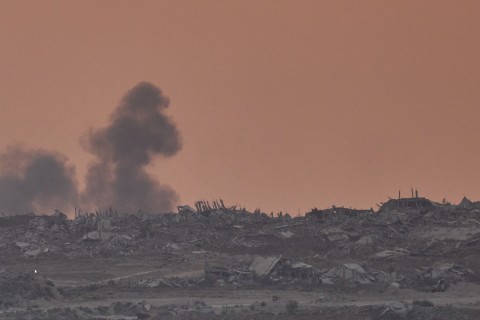After death
Jon Levenson, a biblical interpreter to whom attention must be paid, has coauthored this book with Kevin Madigan, a professor at Harvard who studies medieval texts. Because Madigan is near the beginning of his research career and because Levenson’s work is in my own field of study, I begin with Levenson, though Madigan holds up his end quite well. Together the two of them have made an argument that Jews and Christians share faith in a God who raises people from the dead.
Three decades ago Levenson sent an acerbic wake-up call to Christian Old Testament scholars titled “Why Jews Are Not Interested in Biblical Theology.” His case, completely compelling, was that “Old Testament theology” was conducted by Christian scholars who uncritically practiced supersessionism and read the text directly toward the New Testament without due consideration of the theological claims of the Hebrew Bible itself. Obviously a Jewish scholar could not participate in such an enterprise. Levenson has become the teacher of us all and has almost singlehandedly changed the perspective of the many Christian scholars who have belatedly gained in self-knowledge about these matters. The happy outcome is that Levenson himself is now a major player and an important force in theological work on the Hebrew Bible/Old Testament, and his growing corpus of important publications merits close attention by Christians.
Two years ago Levenson completed a book on the centrality of resurrection in Jewish faith (Resurrection and the Restoration of Israel: The Ultimate Victory of the God of Life [Yale University Press]), in which he showed that the hope of resurrection is understood in the Bible and in Jewish tradition as a conviction about God’s capacity to restore Israel to well-being. That argument is echoed in the present volume:
Resurrection, in other words, was allied to the reversal both of death and of injustice. More specifically, it was linked with ending foreign oppression and the reversal of national misfortune. Jewish belief in resurrection was not, thus, only or even primarily about the ultimate destiny of mortal human beings. It was about God’s righteousness, the vindication of those loyal to him, and the establishment of justice.
That case is closely argued with particular reference to Ezekiel 37:1-14, in which resurrection and restoration are paired in “the valley of the dry bones.”
In the present volume, Levenson reiterates much of the argument of that earlier book, only now the matter interfaces with Madigan’s insistence that resurrection faith is central and nonnegotiable in the Christian tradition as well. The book opens with a recognition of resurrection as a key affirmation of the New Testament, then probes the Old Testament to find the sources of New Testament faith.
The focus in this discussion is on Sheol as a kind of quiet, gray warehouse where the dead go. Contrary to the common scholarly judgment that Sheol is a common destiny for all human persons, Madigan and Levenson make the case that not all the dead go there. Sheol smacks of punishment and is the continuation of an unfulfilled life. The righteous do not go to Sheol but are “enveloped in the blessing of God.” Thus this study identifies two theologies in tension, one that sees Sheol as a common human destiny and one that makes an important distinction about the future for those attuned to God:
What happened with the biblical Sheol, it seems to us, is that the affirmation of faith in the omnipotent and rescuing God of Israel, against whom not even the most formidable enemies can ultimately stand, has collided with the brute fact of death. . . . Something had to give. What gave was not the faith in the limitless power of the Rock of Israel and their redeemer. What gave was death. . . . Death would remain universal, but not everyone who died would experience it as a plague. Sheol would remain pestilential, but not everyone who died would go there.
What gave was death! This is the burden of the book. Death had to yield, so say the texts, to the vigorous power of God, who wills life and who gives life marked by justice.
Because the blessed and the righteous do not go to the place of unfulfilled life, it is important to delineate alternatives to Sheol, alternatives that Levenson terms “antipodes.” A most important antipode is the temple that is a place of paradisiacal blessedness, referred to in the familiar Psalm 23:6: “I will dwell in the house of the Lord forever.”
The argument moves to explicate a common awareness of biblical scholarship: that life and death are not absolute states but constitute a continuum of strength and weakness. Thus every weakness is a death and every strength is a resurrection. Given that recognition, birth is seen as a reversal of death and a “functional equivalent” of resurrection. Illustrative of this matter of a continuum is a study of four brief episodes from the narratives of Elisha in which the prophet variously reverses the state of feebleness and death by performing miracles of new strength—of healing, feeding and resurrection. The authors shrewdly describe the way in which the “simple narrative” of resurrection in 2 Kings 4 anticipates the fuller development of apocalyptic expectation:
In the apocalyptic expectation of a resurrection of the dead at the end of history, the experience of deliverance will become general and irreversible in ways that it is obviously not in the tale of the Shunammite couple. But some of its lineaments can already be seen in the little story of miraculous birth, tragic death, and amazing resurrection of a promised son.
From these small stories, the exposition moves in two directions. On the one hand there are the great exilic texts about the restoration of Israel after it has been humiliated and nullified, perhaps by the vagaries of history or perhaps by divine anger. On the other hand there is a vigorous, more frontal claim for the power of God for life that comes to dominate the later literature of Judaism. Of this development the authors conclude:
The likelihood is that the expectation of a resurrection of the dead did not appear suddenly and in response to a particular crisis. Rather, it grew slowly over the centuries, nourished by the power of earlier biblical texts of the sort we have been discussing.
Thus resurrection is no aberration or late emergent in Jewish faith. Its primal claim is pervasive and intrinsic to the faith. And it is this to which Christianity is heir as well.
Madigan and Levenson conclude with a reflection on how the early church struggled against the Gnosticism and spiritualizing that would scuttle the scandal of resurrection by distancing God from the specificity of bodily existence in the world. The book appreciates and affirms the shared bodily (historical) claims of Judaism and Christianity. It does not, however, reflect much on the distinction between Jewish hope for the resurrection and Christian faith that confesses a resurrection already completed “on the third day.” The authors have no intention of making these distinctions, but they do insist on noticing the great, recurring temptation to negate the bodily victory of the God of history that is pivotal in both faith traditions.
This is an important, even urgent book that comes with vigor and passion. It clearly recognizes that Jews and Christians share a legacy and a conviction that sets them apart from the secular, rational alternative, whereby many seek faith as an ethical mandate while failing to recognize the basis of moral passion for a restored human community (and restored Israel as a subset of that restoration). The book is a challenge to the “cultured despisers of religion” whom Schleiermacher sought to accommodate, and an invitation to Jewish and Christian interpreters to recover nerve and passion for the scandal of newness that comes only from God.
I do not know how it is in rational Judaism, but in rational Christianity there is much embarrassment about the resurrection as a defining claim of faith, especially among those who have been wounded by the authoritarianism of the church. Among liberal Christians there are endless attempts to explain it away, and among conservative Christians there are endless reductionisms in rationalistic form. Madigan and Levenson urge otherwise. The truth to which they attest is the victory of God over the powers of death. Since they are Harvard-informed scholars, it is not surprising that the divine Warrior makes an appearance in their narrative; this mode of God’s self-presentation is as old as Israel’s memory.
In contemporary culture, which in fear, anxiety and brutality keeps ceding its existence to the powers of death, this book is an authorization for both countertestimony and counteraction. When such countermoves are made, they are congruent with the deepest conviction in the tradition shared by Jews and Christians, a shared conviction so deep as to identify who we are as Jews and Christians—in the world, apart from the world and for the world.






